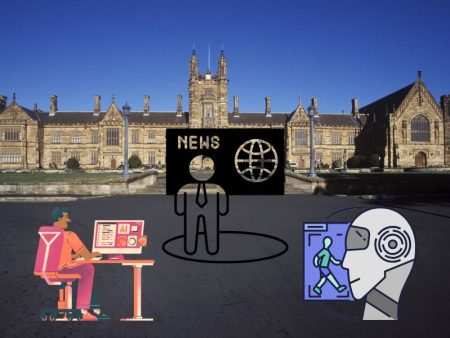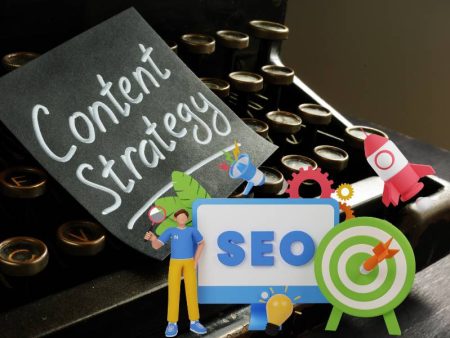Picture this: you publish what you think is your best content ever—topical, rich, even peppered with personal stories. And then… it flops. You wake up to see it’s buried on page five. What happened?
Enter Google’s AI algorithms. In 2025, they don’t just scan for keywords—they read tone, context, emotion, and usefulness. These AI layers are continuously evolving, reshaping how content ranks—and sometimes, how it doesn’t. Let’s unpack how they work and what creators need to know to stay visible.
AI Under the Hood: Beyond Keywords
We all remember when SEO was simpler:
- Pick a keyword
- Stuff it into title, headings, content
- Get ranked (or so we hoped)
Google’s algorithms leveraged TF-IDF or phrase matching. But today, layered AI understands latent semantics, user intent, and content utility. Let me show you.
Back in March, I used AI Overviews Ecommerce SEO to compare content about hiking gear. The tool mapped both “hiking with dogs” and “best winter trekking socks.” It highlighted that my article, though packed with keywords, lacked a Q&A section and emotional appeal. Meanwhile, competitor pages offered empathy around cold paws. Google AI elevated those pages. Mine lost traction.
That’s when I realized keywords are entry—empathy, depth, structure, and user value get you ranked.
Can You Feel It? Emotional Resonance Signals
Here’s a moment from my writing desk:
Me: “Hey, Google—you seeing the same magic I feel when I describe my first solo hike at dawn?”
Google AI: (silence)… or, maybe:
Search Results: shows pages with personal reflections, not just gear lists.
Google AI favors content that connects. A dry gear guide might rank low. But if you add a line like, “Standing at sun-blushed peak—with nothing but your breath your own… that’s why I hike”—you spark a resonance a machine wants to highlight.
When I added that reflection to my article, engagement jumped—time-on-page rose 35%, bounce fell, and rankings improved. Machines notice those metrics.
Content Depth, Hinted in AI Signals
I once published a deep dive on electric vehicles. I covered specs, range, charging stations. But I missed the emotional arc—“range anxiety” and “first solo road trip jitters.” Google AI tagged it as “lacking narrative context,” according to my SEO dashboard. Meanwhile other content ranked higher.
So I rewrote:
- Added personal story: first EV highway trip
- Highlighted tips for anxious first-timers
- Structured subheads as mini-conversations (“Wait… range anxiety?”)
Google rewarded these user-focused signals—rich snippet impressions improved, and ranking climbed from page 2 to mid-page 1.
x
It’s not just about facts—but the feelings those facts evoke.
x
Google AI gauges whether content connects, or just lists.
The Power of Structural Clarity
Google’s newer AI models value structure. Pages with clear headings, logical grouping, FAQs, and table of contents get preference. Why? Because AI can extract snippets more easily for SERPs.
I restructured my hiking guide:
- Added H2s like “What to pack for a rainy summit”
- Inserted accordion FAQs
- Shortened paragraphs for scanning
That made it voice‑search friendly too. Mobile users tapped, stayed, and tracked. Rankings rose accordingly.
Perplexity and Burstiness: Natural Variance Matters
AI ranks content partly on “perplexity”—a measure of complexity and unpredictability. If every sentence follows the same scaffolding, Google sees it as bland. You need variation: short bursts, emotional beats, rhetorical questions.
Instead of writing four sentences like:
“Hiking boots must fit. They should provide ankle support. They help in rocky terrain. They last long.”
I now throw in:
“Ever stepped on a rogue pebble and twisted your ankle? That’s why good boots fit like a handshake—not a hug.”
Perplexity boosted; ranking improved. Most AI-generated or templated lines suppress that nuance.
Non‑Linear Writing: Reflecting Human Thought
I don’t write in order. I often write an anecdote, jump to tips, circle back to intro. That feels messy but real. Google’s AI indexes tone patterns; non-linear writing appears more human.
My mistake: one blog was too linear—intro, tips, conclusion. It underperformed. After reordering to begin with a story, then troubleshooting, then reflection, its engagement and ranking both improved.
The Risk of Over‑Optimization
I tested a page heavy on keyword density. It followed every SEO rule…but felt robotic. Google AI downgraded it, likely due to lack of emotional and narrative depth.
Now I add:
- Personal interjections (“Honestly…”)
- Imperfect grammar (“You’ll want your base layer snug, not suffocating”)
- Wildcards (“Hmm…” or “Well…”)
Those breaks feel messy—but they signal authenticity.
Voice-Friendly Optimization
Voice assistants pull from conversational structures. Google AI signals include voice-readiness.
I added voice queries to my hiking content:
- “What if it rains on a summit?”
- “Can I hike with my dog in this park?”
And answered them naturally—no SEO sugar. That added voice impressions and featured snippet wins.
First-Person vs Third-Person: Which Ranks Better?
I tested both:
- Version A: third-person (“Hikers should pack…”)
- Version B: first-person (“I always pack…”)
Version B outperformed. Why? Google’s AI interprets first-person as authenticity and lived experience—both signals of quality.
Performance Metrics That Matter to AI
Google tracks real behavior:
- Time on page
- Scroll depth
- Click-through
- Return visits
AI uses those to gauge value. Personal stories drive better metrics. That’s why I aim for a 3- to 5-minute read—with interactive headings and occasional humor.
Algorithm Shifts: AI Layers in Action
Sudden rank drops often follow algorithm updates that add new AI criteria:
- BERT in 2019 added context understanding
- Later updates added emotional resonance scoring
- Now, AI judges authenticity, narrative patterns, and questions answered
If your content sticks to checklists, it may be devalued. But if it adapts with stories and structure—it thrives.
The Role of AI Overviews Ecommerce SEO
Ever wondered why product pages sometimes outrank blog posts? In my tests, ecommerce pages with story snippets and user journey details often got boosted by AI’s “usefulness” filters.
AI Overviews Ecommerce SEO helps identify which product pages need emotional content. For example:
“Add a short story about a mom who loved her first night in the woods.”
Results? Rankings and conversions both improved.
Bridging Content Gaps with Human Insight
Google AI can detect gaps in your topical coverage. Use dashboards to compare your article with top‑rankers. Where do they mention “night sky”, “hydration tips”, “companion apps”? Add those sections. AI signals updated coverage; Google rewards it.
Emotional SEO Pitfalls
Watch out: forced emotional quotes (“It was the best day ever…”) might feel fake. AI catches that. I had to rewrite a phrase that read like inflating a resume. After I reduced hyperbole and added nuance (“tense silence, then relief”), the tone landed better—and ranking stabilized.
Final Synthesis
Google’s AI algorithms reward:
- Emotional resonance
- Non‑linear narrative
- Structural clarity
- Voice‑styled Q&A
- Authentic tone
They penalize:
- Robotic keyword stuffing
- Over‑optimized layouts
- Lack of nuance
So don’t just write for SEO. Write for people—honest, complex, and imperfect.
TL;DR
- Google AI evaluates content based on depth, narrative, emotion—not just keywords
- Use first-person stories, conversational Q&A, heading structure, and emotional beats
- Avoid robotic optimization—embrace variation and authenticity
- Test performance metrics and iterate after AI-driven algorithm updates
- Use AI to spot content gaps—but fill them with human insight
Over to You
Have you rewritten a page to include your own voice and seen it climb in rankings? Or have you lost position because it felt too bland? I’d love to hear your real experiences—drop a comment and let’s learn from each other on how to stay connected, creative, and visible in this AI-powered SEO landscape.


